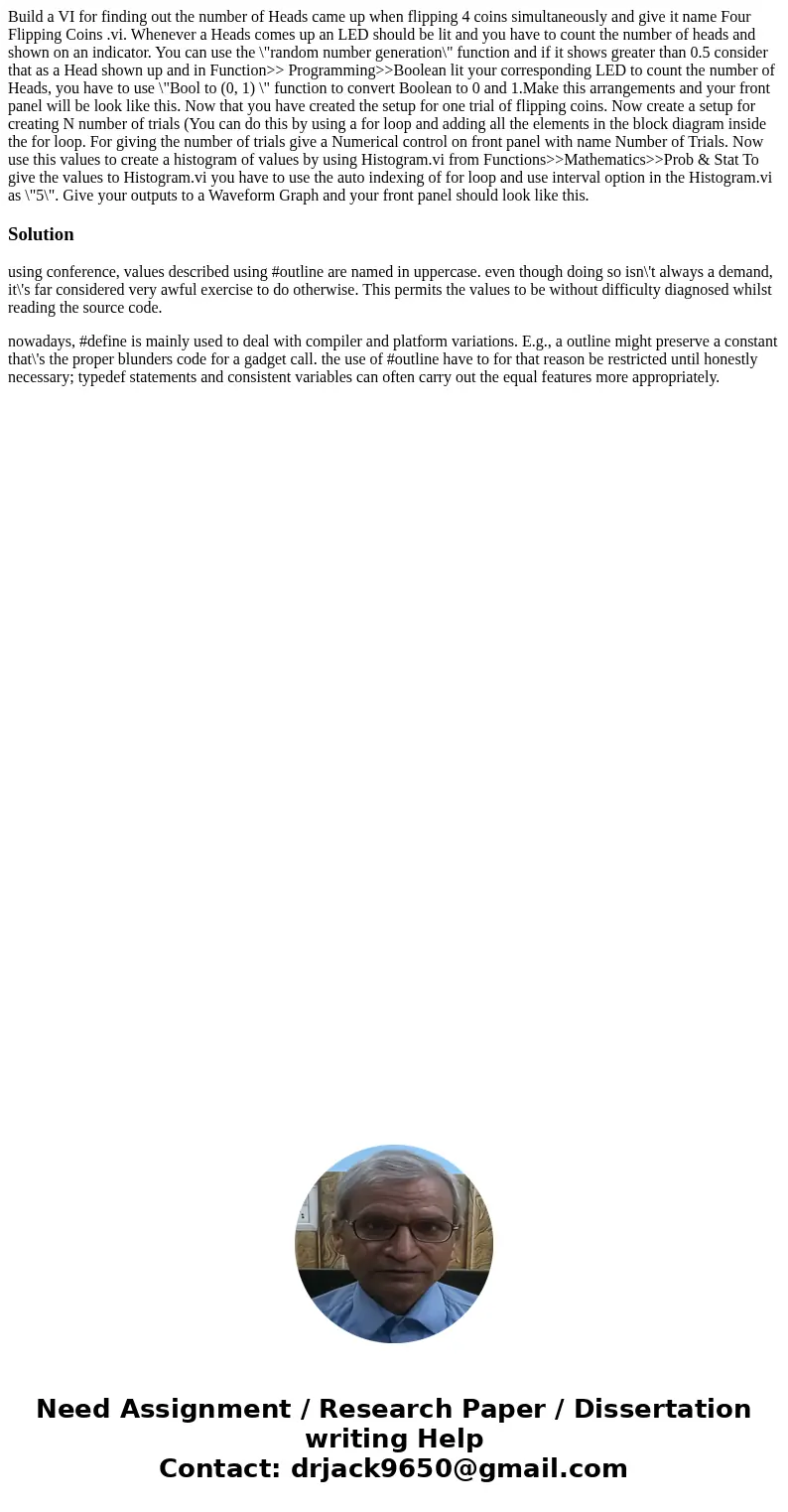Build a VI for finding out the number of Heads came up when
Build a VI for finding out the number of Heads came up when flipping 4 coins simultaneously and give it name Four Flipping Coins .vi. Whenever a Heads comes up an LED should be lit and you have to count the number of heads and shown on an indicator. You can use the \"random number generation\" function and if it shows greater than 0.5 consider that as a Head shown up and in Function>> Programming>>Boolean lit your corresponding LED to count the number of Heads, you have to use \"Bool to (0, 1) \" function to convert Boolean to 0 and 1.Make this arrangements and your front panel will be look like this. Now that you have created the setup for one trial of flipping coins. Now create a setup for creating N number of trials (You can do this by using a for loop and adding all the elements in the block diagram inside the for loop. For giving the number of trials give a Numerical control on front panel with name Number of Trials. Now use this values to create a histogram of values by using Histogram.vi from Functions>>Mathematics>>Prob & Stat To give the values to Histogram.vi you have to use the auto indexing of for loop and use interval option in the Histogram.vi as \"5\". Give your outputs to a Waveform Graph and your front panel should look like this.
Solution
using conference, values described using #outline are named in uppercase. even though doing so isn\'t always a demand, it\'s far considered very awful exercise to do otherwise. This permits the values to be without difficulty diagnosed whilst reading the source code.
nowadays, #define is mainly used to deal with compiler and platform variations. E.g., a outline might preserve a constant that\'s the proper blunders code for a gadget call. the use of #outline have to for that reason be restricted until honestly necessary; typedef statements and consistent variables can often carry out the equal features more appropriately.

 Homework Sourse
Homework Sourse